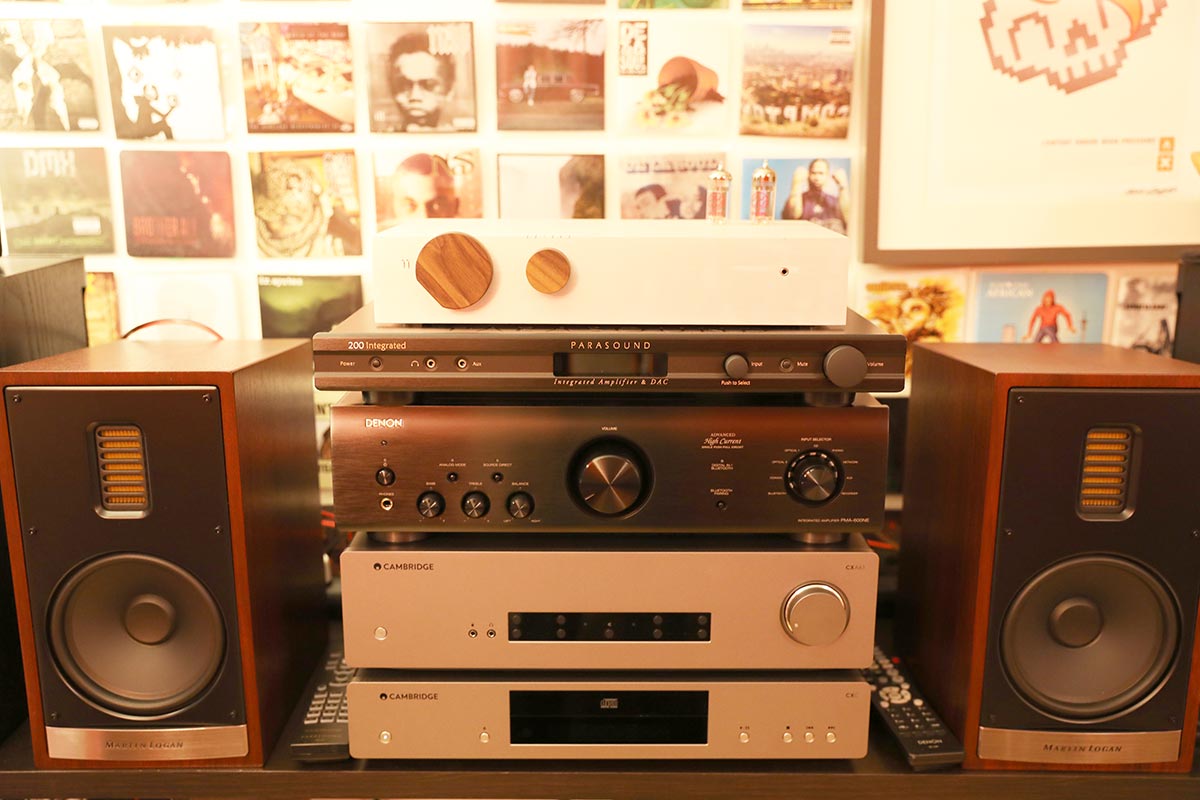
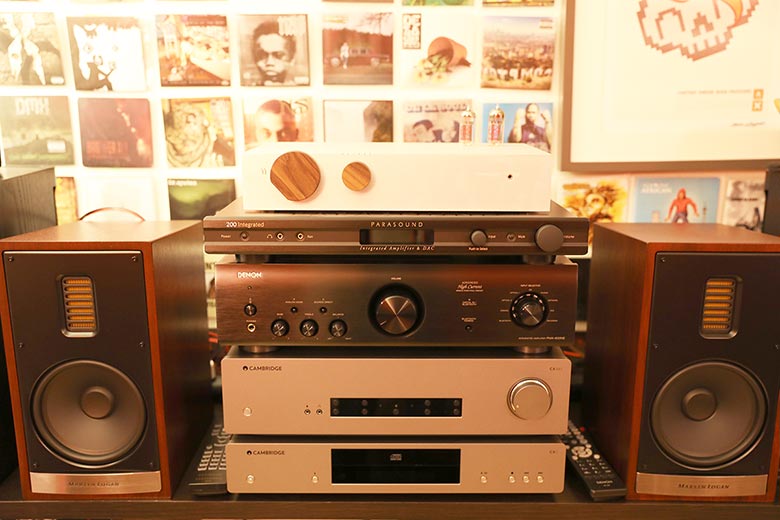
The Master Switch


The Master Switch
A great stereo amp is the key to a great hi-fi system, but there are thousands of amps available and picking one can be tricky. That’s where we come in, with our full guide to choosing the right amp. Here, we’ve broken down the key steps in choosing a stereo amp, from matching them with speakers and choosing the amount of power you need, to adding a subwoofer and where to actually place your amp. For a look at our top picks, see our article on the best stereo amps.
The terms ‘integrated’, ‘power’ and ‘pre’ get thrown around a lot when discussing amplifiers, and fighting your way through this particular thicket can be a mission. It helps to understand what these terms mean, and how they apply to each other, before you buy.
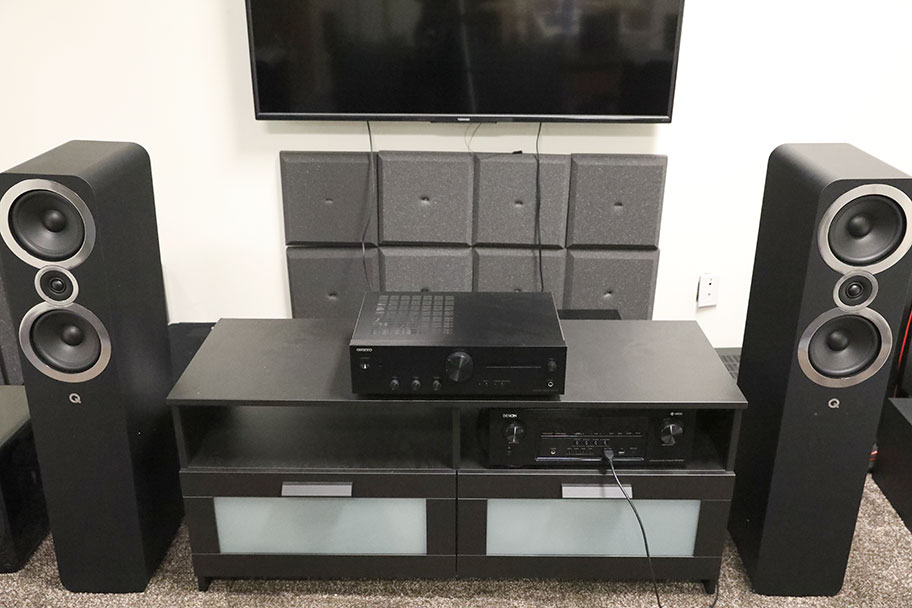
Any audio signal, be it from a turntable or Spotify, starts life at an incredibly low level. For us to hear it, it has to be boosted or amplified. To do this, the sound goes through two stages. The first is pre-amplification, which boosts the signal a little and tells it where to go in your system. The second is power amplification, which, as the name suggests, infuses the audio signal with electrical power. This not only boosts it to levels you can actually hear, but it also powers any speakers you’ve attached.
Now, if you’re a hard-core audiophile with a lot of money to spend, you’ll have separate boxes for your preamp stage and your power amp stage, allowing you to swap different models in and out to customize the sound. But if you’re like the rest of us – and definitely like those of us here at TMS – you’ll be going for an integrated stereo amp. An integrated amp combines both the pre and power stages of amplification in one handy box. Connect your source to it, connect it to your speakers, and you’re good to go. You’ll find a much more detailed explanation of pre and power amps here, but for the most part, we recommend getting an integrated amplifier. It will save you a world of trouble and quite a lot of money.
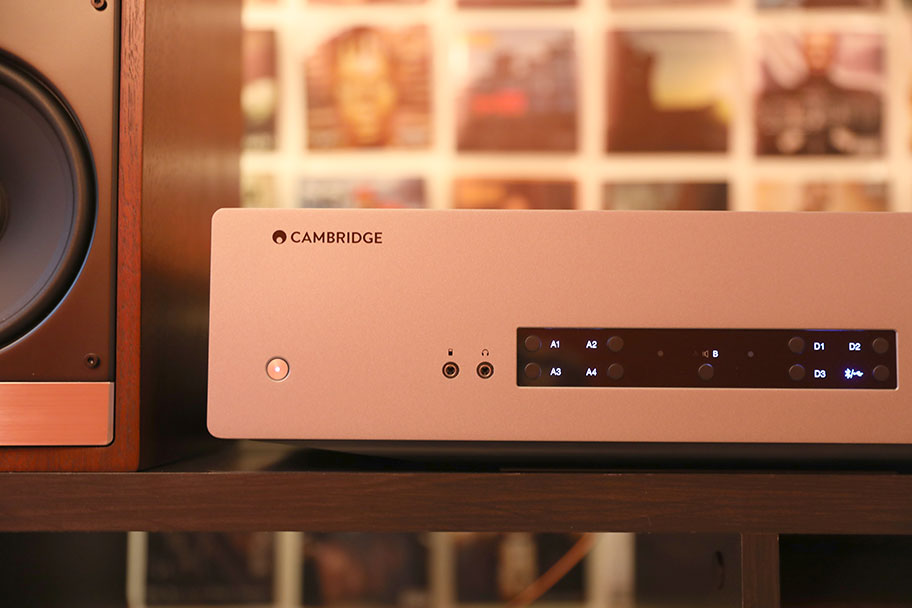
Let’s say you listen to digital audio, like music streamed from Spotify. That music exists only as code on your computer or phone, and very obviously, you can’t hear code. To convert that code into an actual, audible signal, you need something known as a DAC (Digital-to-Analog Converter). This will convert the signal in the cleanest and most efficient way possible, allowing it to be amplified.
Now you’re probably thinking: this is ridiculous, they can’t want me to buy yet another box for my system. The good news is, you don’t have to if you don’t want to. It’s entirely possible to get a stereo amp with an included DAC, meaning that all you have to do is connect it to your source with the right cable. While a separate, external DAC will usually improve your sound quality, the quality of the internal DACs in stereo amps is getting much better over time. One of our favorite amps, the Cambridge Audio CXA61 (full review here), comes with an excellent internal DAC. If you’re looking for a stereo amp that will provide a convenient, single box solution, get one with an included DAC.
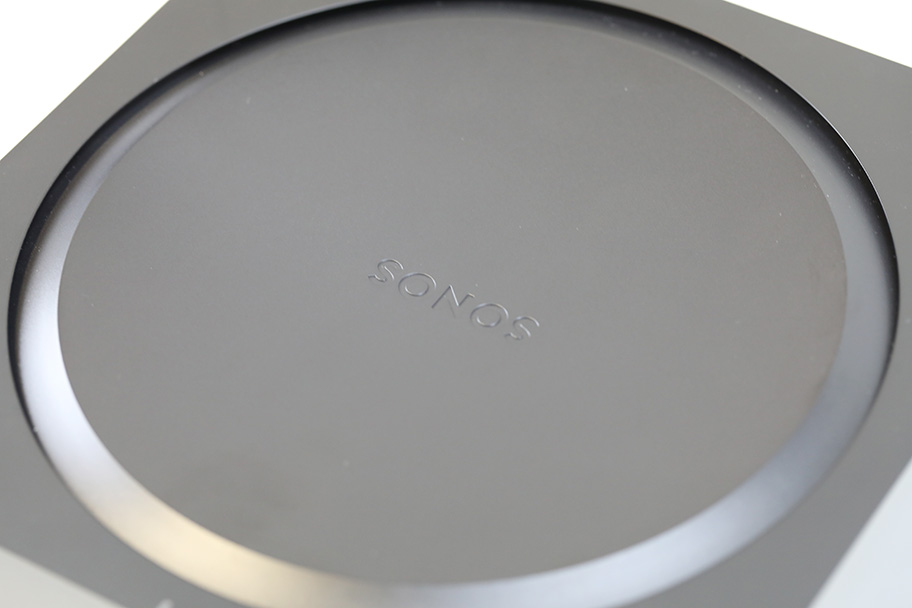
If you have a pair of regular bookshelf or floorstanding speakers for your hi-fi system, then they will need to receive power from your stereo amp. The problem is, you don’t want to underpower or overpower your speakers – you either get very low volume or sound will start distorting in horrible ways. So, how do you ensure that you have a match? How do you make sure that your speakers are receiving the right amount of power while, at the same time, providing the best sound?
This is one of the most common questions we get over email, and the good news is that it’s easy to figure out for yourself. If you’re thinking of buying an amplifier, take a look at the specs on the manufacturer’s website. In particular, look for the RMS power output (sometimes manufacturers give a power output without labelling it RMS - just go with what you see). For an example, let’s take one of the best budget amps around, the $349 Onkyo A-9110 (full review here). It has an RMS output of 50W/4Ω. That figure might look annoyingly complicated, but it’s actually really simple once you know what it means.
RMS is essentially a measure of how much power the amplifier puts out at a reasonable volume – as opposed to its peak power, which is how much power it can put out when pushed to the max. Forget the 4Ω for the moment. What you need to know is that the Onkyo A-9110 can comfortably put out 50 watts of power. To pair it with a set of speakers, all you need to do is look for the speakers’ recommended amplifier range – not only listed on manufacturer websites, but also conveniently listed on our own roundups of the best speakers available. If the amplifier output falls somewhere in the speakers’ recommended range, you’re good.
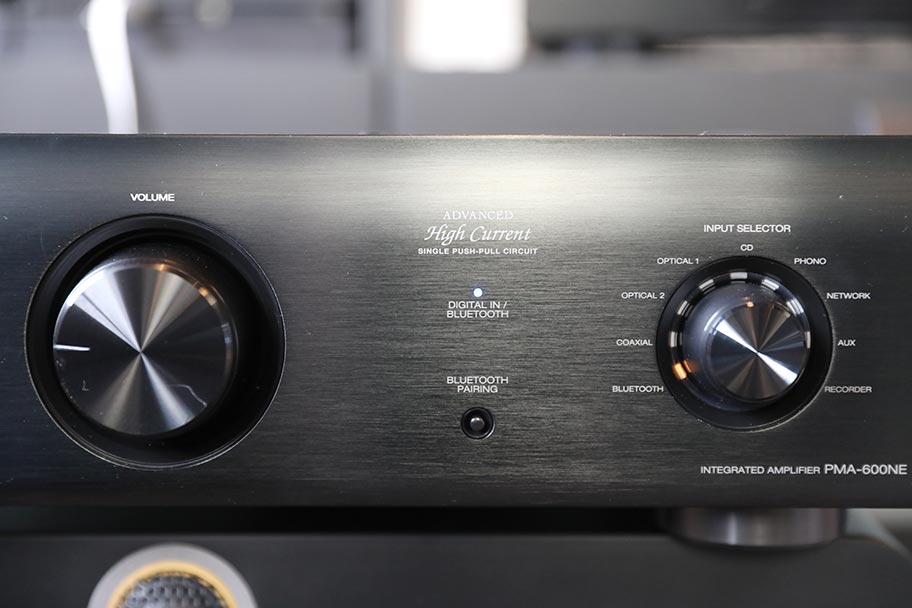
For example, let’s say you decided to pair your Onkyo with the ELAC Debut 2.0 B6.2, a $350 set of speakers with an amplifier range of 30W-120W. The Onkyo is square in the middle at 50W, so these two will have no problems playing nice together. These values aren’t hard and fast, by the way. An amplifier with over 120W of output power would still be able to handle the ELAC speakers, as long as the volume isn’t too high. You aren’t going to blow your speakers here; we promise.
But what about the 4Ω? The Ω stands for ohm, and it refers to impedance: a measure of electrical resistance. Ideally, you want to make sure that the impedance of your amplifier’s output power matches that of the speakers, which generally come in a 4Ω-8Ω range. But we are going to let you in on a secret. We test dozens of amps and speakers every year and we regularly mismatch impedance, sometimes on purpose, and absolutely nothing has happened. Yes, having identical impedances may give you slightly better sound quality, but the fact is, impedance fluctuates. Unless you want to delve very deep into amp and speaker matching – in which case, read this in-depth explainer – you can pretty much ignore this part. As long as your amplifier output power falls somewhere within your speakers’ recommended amplifier range, you’ll be absolutely fine. Trust us.
How does this help you choose a stereo amp? Because if you have speakers already, then you will be able to pick an amplifier that can power them effectively. If you’re building a hi-fi system from scratch, you can buy an amplifier first and then select a set of speakers with the right power range later.
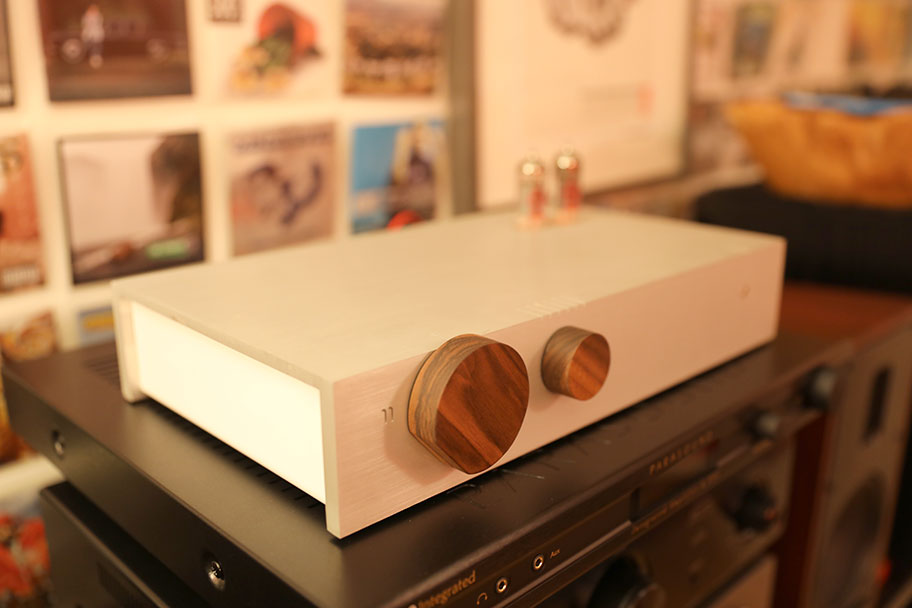
If you like bass, it may be worth adding a subwoofer to your system, which is a dedicated speaker for the low frequencies. If you do this, you need to make sure that your stereo amp can actually handle a subwoofer. Most subs don’t need to be powered in the same way regular speakers do, and usually have their own internal amps powered by a regular wall plug, but you will need to connect them to your amp with the appropriate cable. To see if your stereo amp can accommodate a subwoofer, look for a connection on the back labelled Pre Out or Sub Out. It’s actually quite rare these days to find an amplifier that can’t handle a subwoofer, but these are good indicators if you’re not sure.
When it comes to choosing a stereo amp, heavier is always better. Good quality components weigh quite a bit. We’re talking a lot of metal here, and the more heavily-built the components are, the better they will sound. As an example, take the $699 Sonos Amp (full review here) which weighs 4.6lbs, and compare it to the Cambridge Audio CXA61 (mentioned above) which weighs 18.3lbs. Don’t get us wrong: the Sonos Amp has a lot to recommend about it, but there’s no question that the Cambridge Audio amplifier sounds better, mostly due to the internal components. Weight isn’t everything, but it can give you a clue as to whether or not the amp you’re buying is any good.
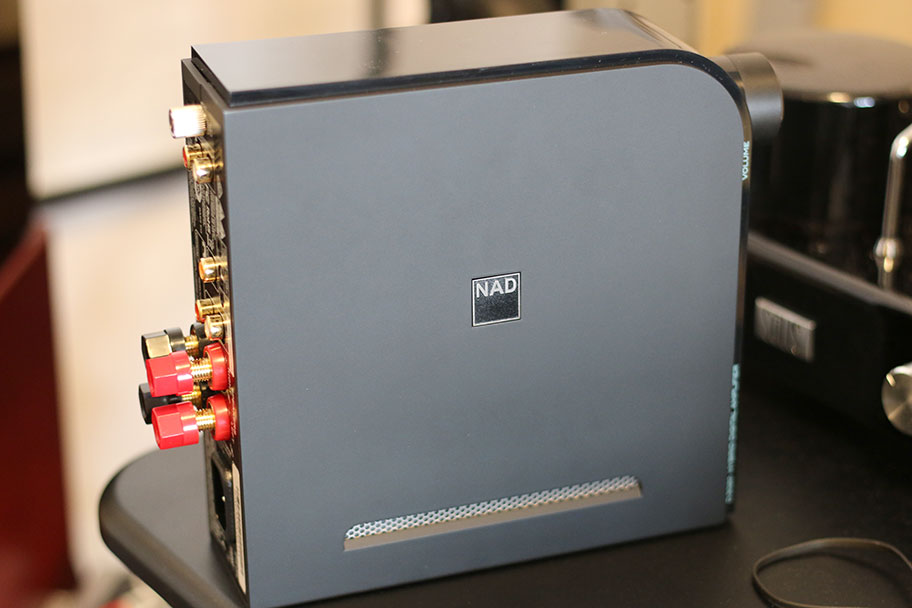
Manufacturers – bless their cotton socks – often throw around terms like Class A and Class A/B and Class D without explaining them. Essentially, these different amplifier classes are shorthand for how certain combinations of circuitry perform. We don’t want to get too deep into the weeds here – there’s a much more in-depth explanation here – but briefly, here’s what you can expect for each class.
Class A amps have low distortion, but aren’t good at driving sensitive speakers. Class B amps are better at powering speakers, but can have a touch of distortion. A Class A/B amp is a hybrid between these two that eliminates the disadvantages, but which can be more expensive. Class D amps are small, light, and efficient, and are among the most common types of amp currently available. The Sonos Amp, mentioned above, is Class D. Which one you pick is up to you, but you can rest assured that it’s not going to make too dramatic a difference to your system.
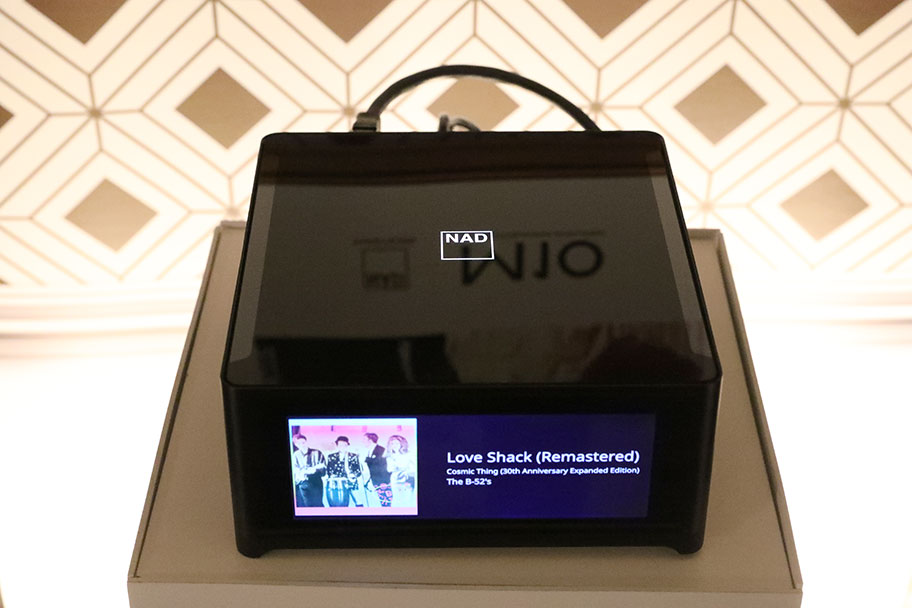
Given how much of our listening these days is done wirelessly, it’s hardly surprising that manufacturers have been incorporating Bluetooth and Wi-Fi into stereo amps. We recently had a larger than usual number of amps in our testing room, for whatever reason, and almost every single one of them had Bluetooth. This means it’s entirely possible to set up a hi-fi system with nothing more than speakers, an amp, and your phone, with minimal loss in audio quality. What’s less common are amps that are connected to Wi-Fi, allowing you to stream directly over your wireless network. They do exist, but they tend to be quite expensive, like the $2,499 NAD M10 V2. Either way, if you listen to your music wirelessly, it’s very easy to find a stereo amp that can do the job for you.
There are some connections that all stereo amps will have, regardless of how much you spend or which one you buy. They will all, for example, have the ability to connect to a set of speakers via four binding posts on the back. They will also have a power cable. To our knowledge, battery-powered stereo amps don’t exist yet, but if you know of one, please tell us in the comments below.
However, that’s where the commonalities typically end. It’s worth thinking about what sort of inputs and outputs you need on your stereo amp, as you don’t want to end up paying for things you’re not going to use. If, for example, you plan on doing your listening via a turntable, then you may want to make sure that your chosen stereo amp has a phono input. If you have an external DAC, or want to buy one, then you will be needing an RCA input. If you want a single, in-the-box solution, then you need to make sure that your amp can connect to your music source – either via Wi-Fi or USB. A little research here can save you a lot of money. It’s also worth thinking about whether you plan to expand or change your hi-fi system in the future, as it may be a good idea to buy an amplifier with inputs that you’ll need later, as opposed to right now.
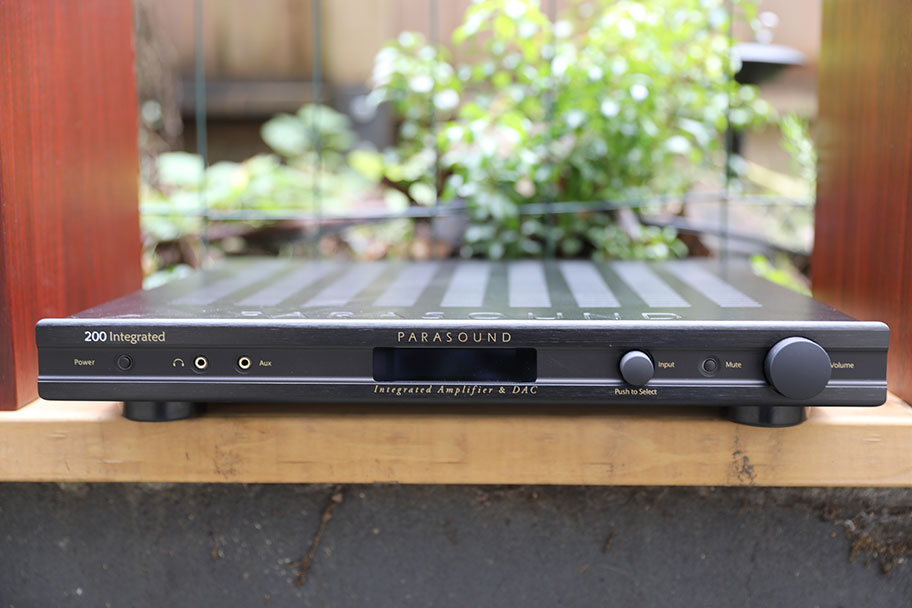
Once you have a stereo amplifier, where do you put it? The traditional answer is between your hi-fi speakers, right in the middle. Good thing we aren’t traditionalists, because we say you can put your amp wherever you damn well please, as long as you keep a few things in mind. The first is that amplifiers get hot, and in some cases, very hot. You want to place your amp in a cool, well-ventilated area with a couple inches of air around any vents it has on the housing. It’s totally fine to place it in a cabinet or cupboard, but you absolutely should not block these vents. Blocking the vents is never a good idea and could seriously damage your amp by doing so. The second thing is to make sure that you have long enough speaker cables to reach your speakers. It’s a good idea to make sure they are out of the way of any foot traffic, too.
You will also have to access the amps controls to turn it on and off, and adjust the volume. If the amp is in the open, that obviously won’t be a problem, but if you’ve hidden it away, you may have an issue communicating with it via the remote. If you can foresee this being a problem, then you might want to look into a separate I/R receiver. Just make sure that your amplifier has a Control connection, to allow this to be connected.
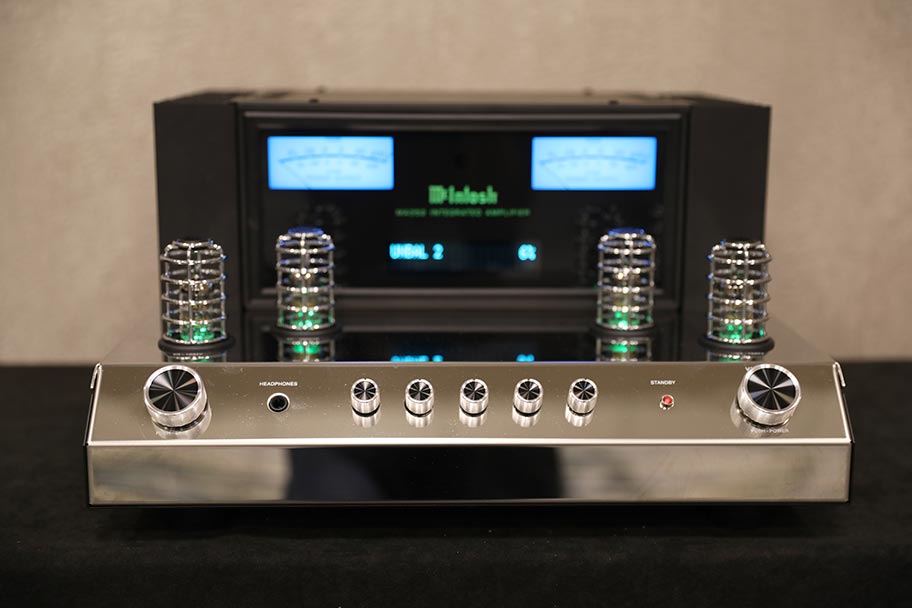
There are two main categories of stereo amp - tube and solid state - and they differ in the way they treat sound. Choosing a type is less about the amount of money you spend, as there are examples of both types in all price ranges, and more about what kind of sound you’re looking for.
Solid-state amps rely entirely on electrical circuitry To get the job done. This circuitry is always internal, and usually cannot be modified by the listener. The sound of these amplifiers put out generally tends to be a little more neutral and balanced, with emphasis on clean detail – although there are plenty of exceptions. Tube amps are simply different. They pass their electrical signal to prominent, glass vacuum tubes, which are usually visible to the listener and can be swapped for sound customization in a process known as tube rolling. The sound that passes through these tubes is altered through a process known as thermionic emission – we won’t go into it here, as it’s a little bit weighty for our purposes. Generally, tubes produce warm, rich, characterful sound that’s less concerned with being realistic and more concerned with emphasising certain parts of the frequency spectrum.
Solid state amps are generally more common than tube amps, although there are several examples of each available. Our particular favorite tube amp at the moment is the wonderful Heaven 11 Billie - it’s expensive, at $1,500, but it sounds superb. Fortunately, you don’t have to spend that much money to get a good amp, regardless of which type you go for.
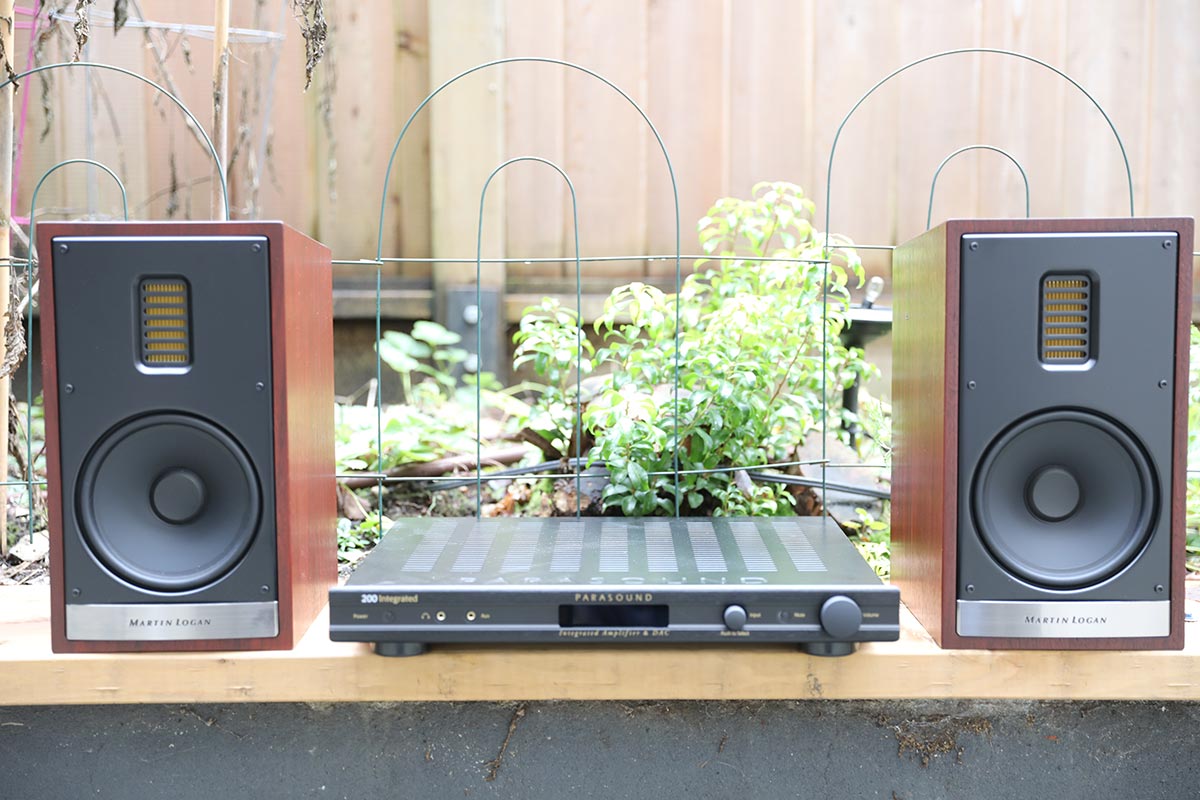
This distinction is actually pretty straightforward. Stereo amps have two channels: a left channel and a right channel. An A/V receiver, on the other hand, has five or more channels and is designed to power a surround sound home theater setup. What this means is that you should not buy a stereo amp if you plan on using more than two speakers and a subwoofer. It simply will not be able to run your home theater system. You can run a two-speaker hi-fi system with an A/V receiver quite happily, but to us, it seems like a bit of a waste when there are so many great and inexpensive stereo amps available.
Generally speaking, $200 should be your bottom limit for a new stereo amp. That may seem like a sizable price, but anything below that will start to seriously impact the sound. Amps below $200 will almost certainly use off-the-shelf components and are not nearly as reliable as other models. Simply put, they won’t sound great. The good news is that, once you get past that $200 boundary, you can spend just about any amount of money you like on a good stereo amp. You are limited only by your budget.
No matter the price point, there are dozens of models available. Yes, it’s entirely possible to spend five or six figures on an amp, although improvements tend to be very incremental after about $5,000. You’ll find stereo amps available to buy everywhere, but the best selections will come either from your local audio store or online. If you’re ready to buy, click the button below to go to our list of the best stereo amps of this year!
See Our Top Stereo Amp Picks